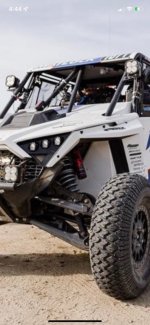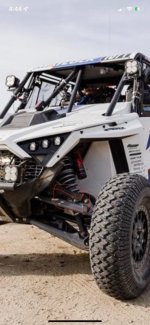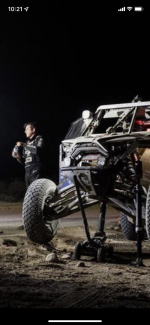- Thread starter
- #961
Sand Shark
Well-known member
- May 5, 2021
- 4,674
- 4,972
That shock tuning company does run some interesting set ups.No doubt the Pro R has its weak points. Ball joints and the clevis seem to be the biggest issue. With this specific example, the shafts are not the problem. This is likely a shock tuning, setup issue with the shaft breaking. Seen setups where their crossover gaps never even engaged the main spring until the last 3/4” of travel with the spring rates they used. Plus the valving in their setups run a ton of bleed and seen carnage from their shocks from a race car as well. Guthrie didn’t seem to have any issues in the mint 400 with walkers placing at the top with Class 1 and Trick Trucks…
Last edited by a moderator:






